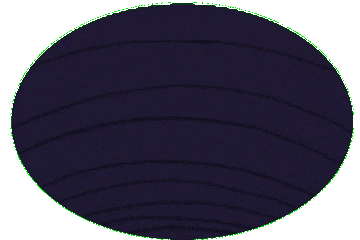Central Park
Central Park is an urban park between the Upper West Side and Upper East Side neighborhoods of Manhattan in New York City, and the first landscaped park in the United States. It is the sixth-largest park in the city, containing 843 acres (341 ha), and the most visited urban park in the United States, with an estimated 42 million visitors annually as of 2016. Central Park is owned by the New York City Department of Parks and Recreation but has been managed by the Central Park Conservancy since 1998 under a contract with the government of New York City in a public–private partnership. The conservancy, a non-profit organization, sets Central Park's annual operating budget and is responsible for care of the park. The creation of a large park in Manhattan was first proposed in the 1840s, and a 778-acre (315 ha) park approved in 1853. In 1858, landscape architects Frederick Law Olmsted and Calvert Vaux won a design competition for the park with their "Greensward Plan". Construction began in 1857; existing structures, including a majority-Black settlement named Seneca Village, were seized through eminent domain and razed. The park's first areas were opened to the public in late 1858. Additional land at the northern end of Central Park was purchased in 1859, and the park was completed in 1876. After a period of decline in the early 20th century, New York City parks commissioner Robert Moses started a program to clean up Central Park in the 1930s. The Central Park Conservancy, created in 1980 to combat further deterioration in the late 20th century, refurbished many parts of the park starting in the 1980s. The park's main attractions include the Ramble and Lake, Hallett Nature Sanctuary, Jacqueline Kennedy Onassis Reservoir, Sheep Meadow, Wollman Rink, Central Park Carousel, Central Park Zoo, Central Park Mall, Bethesda Terrace, and the Delacorte Theater. The biologically diverse ecosystem has several hundred species of flora and fauna. Recreational activities include carriage-horse and bicycle tours, bicycling, sports facilities, and concerts and events such as Shakespeare in the Park. Central Park is traversed by a system of roads and walkways and is served by public transportation. Central Park is one of the most filmed locations in the world, and its design has inspired that of other parks. It was designated as a National Historic Landmark in 1963 and a New York City scenic landmark in 1974.
This article uses material from the Wikipedia article "Central Park", which is released under the Creative Commons Attribution-Share-Alike License 3.0.
References
| Title | Summary | |
|---|---|---|
| March of Dimes | ... Sheep Meadow inside New York's Central Park on April ... | |
| Cousin Brucie: My Life in Rock 'N' Roll Radio | ... Dimes benefit in New York's Central Park . | Author: ... | |
| Transperformance 2005 - New York: A Bite from the Big Apple | ... transformed into New York's Central Park for one ... | |




